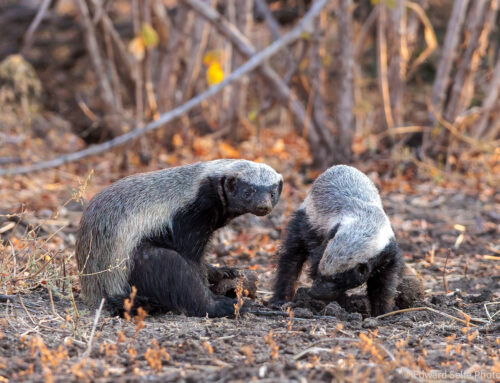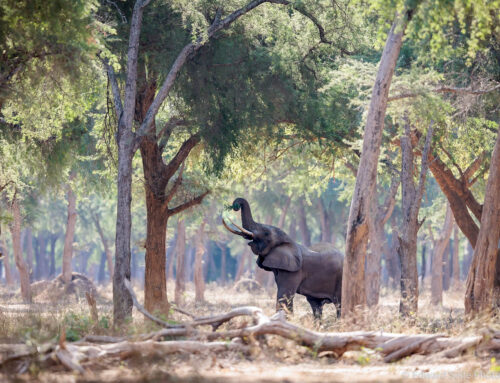I have recently returned from a trip to Liuwa Plains National Park in the Western Province of Zambia. It is an area with rich cultural heritage as well as wonderful wildlife. The Lozi people of that area have a history which goes back as far as any other tribe in Zambia, and still maintain a functioning feudal system with a King, his Queen and a system of couta (or advisory courts). In the 19th century, the king declared the area that now contains Liuwa Plains as his own private hunting ground and put in place ndunas (emissaries) to maintain the park and ensure that poaching and degradation of the grasslands and herds were kept in check.
The Lozi King had significant influence in the area and his system remained in place until the recent Angolan civil war led to overspill of rebels who decimated the park’s resources, reducing the populations of herbivores dramatically and destroying most of the carnivores. In 2003, African Parks took on the management of the park and have put in place a system to rehabilitate the dwindling herds and relocate populations of carnivores to build the park back up to its former state. The arrangement with African Parks came about at the request of the Lozi King, still powerful in his position, but unable to manage the pressure of the growing population in the area. But, his role as leader of the people, and his invitation to African Parks has meant that the project has met with less resistance from the local population than other community-based conservation projects across Africa.
I will be running photographic safaris in Liuwa Plain in November 2015 and May 2016, so I joined a safari to the area to see the opportunities that it provides and meet the guiding team from Norman Carr Safaris. I stayed 4 nights at Matamanene Camp in the heart of the park, and enjoyed 5 days of safaris throughout the area. Having lived in the bush for 6 years, it was a joy to go on safari to a region that could barely be more different! The grasslands are formed by the annual flooding of the huge Zambezi river, and are vast beyond imagination. In some areas, it’s possible to see nothing but grass, and at the corners of your vision, the curvature of the Earth is apparent!
We landed at the airstrip in Kalabo and began a 2 hour drive through the mushitu scrub towards the plains. The arrival of the grassland happens quite suddenly – presumably at the high-point of the flood waters – and the effect is quite striking. As far as the eye can see, there is golden-topped Laudatia grassland, speckled with endless meandering wildebeest mowing the short grasses.
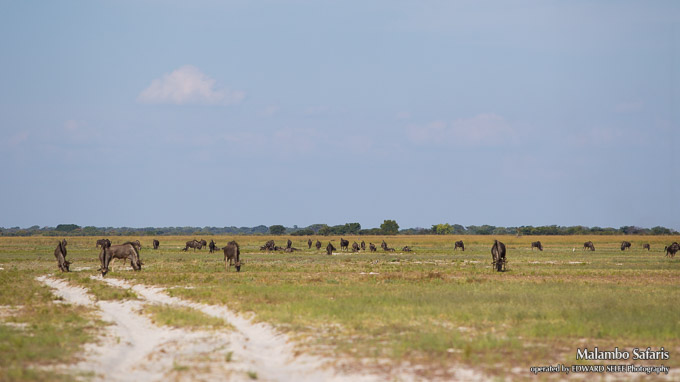
The grassland is broken up by regular pools left behind by the receding floods. Around these pools, animals congregate to drink, and hyaenas use the cool mud to counteract the heat of the day. Unusually for Africa, there are no crocdiles here, so antelope and hyaena are safe to walk right into the water – and they regularly do. Here two Red Lechwe rams face off at the edge of the large King’s Pool.

Arriving in the centre of the plains, the wildebeest are more relaxed around vehicles and allow a close approach and even the chance to get out of the vehicle and photograph them from the ground. In such a vast and flat environment, a lower angle of view tells a better story of the expanse of space and the small role that an individual plays in it.
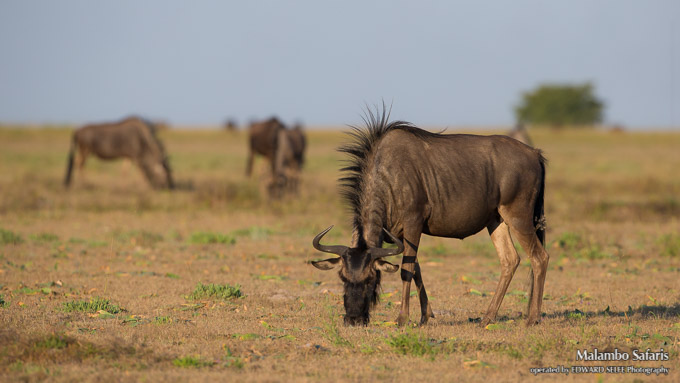
On our first afternoon, we were lucky to find Liuwa’s famous lions resting up in the shade of some bushes close to their favourite waterhole. Two females and their 3 cubs are all that remain of the lion population here; until recently, Lady Liuwa was alone on the plains, but African Parks have reintroduced 2 males and 2 females to give her company and turn the population into a viable unit. For various reasons, only one female of the 4 introduced lions remains, but she has 3 cubs. The male ‘cub’ (now 17 months old) was the only one visible at that time, but he gave us a terrifying stare through the bushes and then went back to sleep!

Moving on to make the best of the evening light, which was beautiful by this stage…..
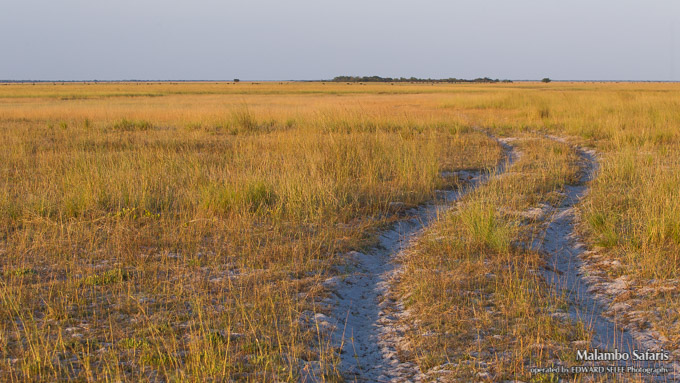
…we set up in a good spot for sunset, ready to take shots of the silhouetted wildebeest agains the reddening sky.

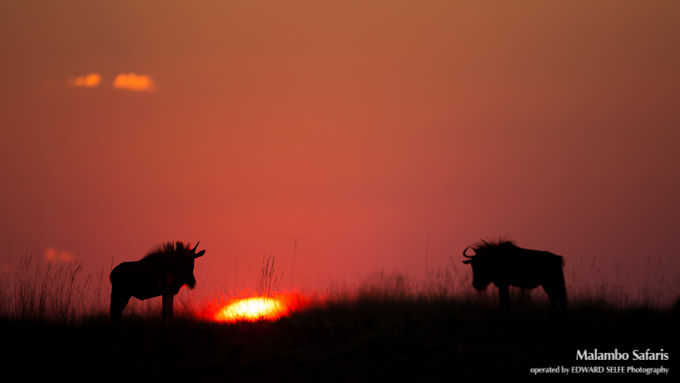
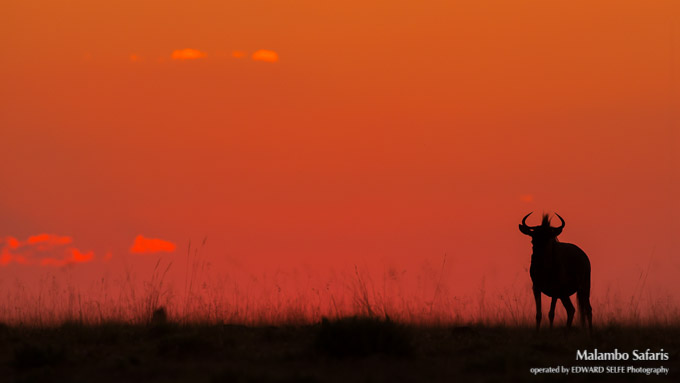
Returning to the same area the following morning, we found that the wildebeest were beginning to head to water to drink, so we set up at one of the lagoons and waited for them to arrive.
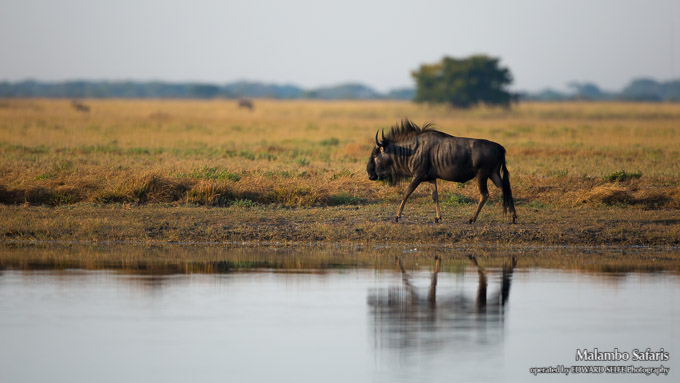

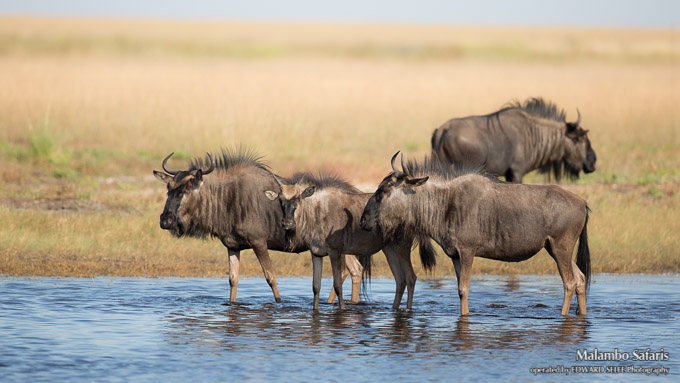
Zebra were rather more shy in this area, and we wondered why so we set off to have a look in that direction.
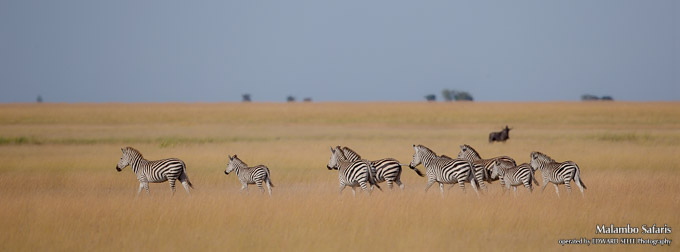
We found a pair of wildebeest sparring, but they stopped when we got nearby….
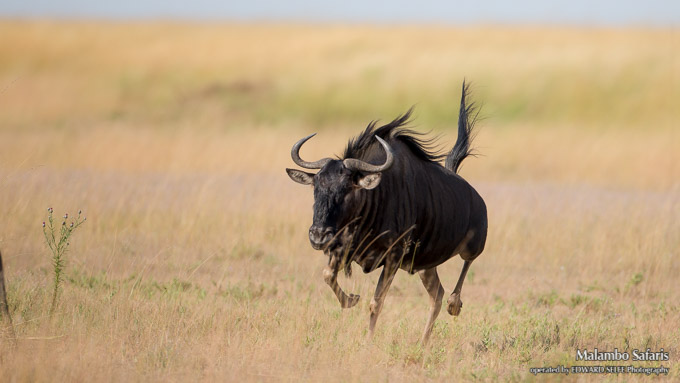
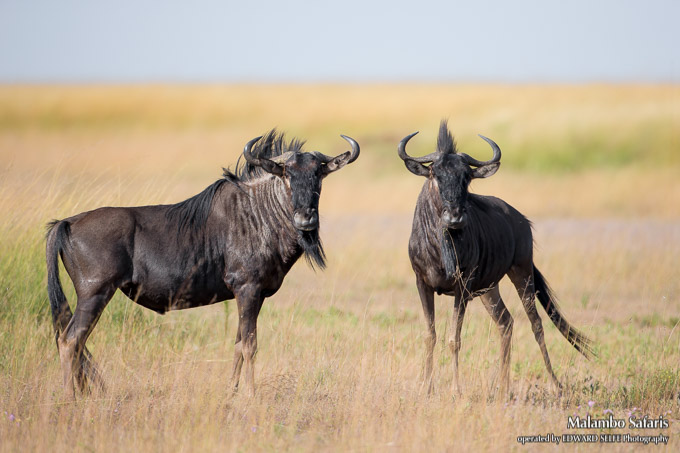
And then we found the cause of the commotion. A large clan of spotted hyaenas (currently the apex predator in Liuwa due to their numbers and lack of competition) had killed a wildebeest during the night and they were feeding on the small remains of it around a waterhole. We approached slowly, but we needn’t have worried. Being top dog has made the hyaenas of Liuwa incredibly confiding and they approached the vehicle and even sniffed my boot at one point!

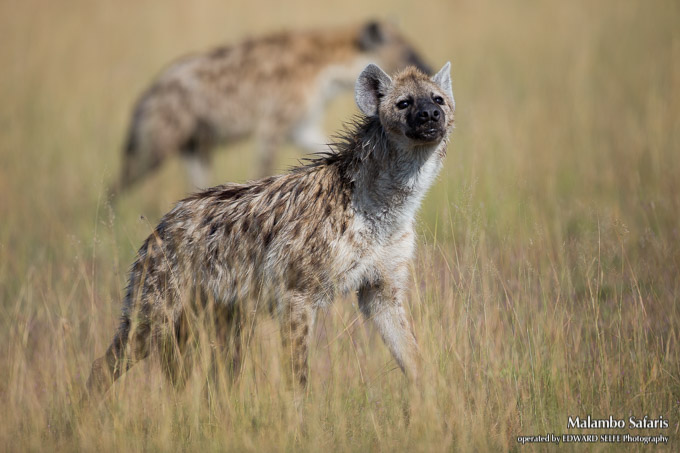
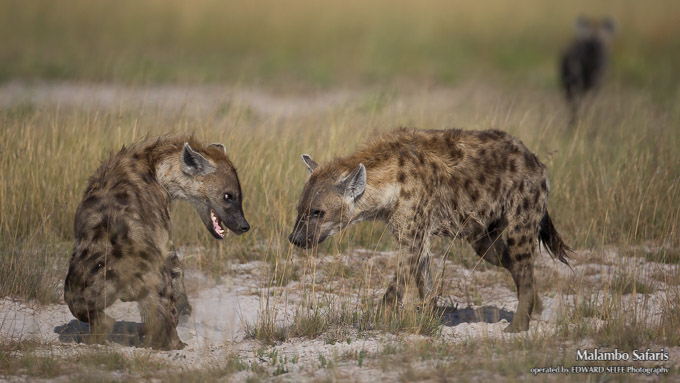
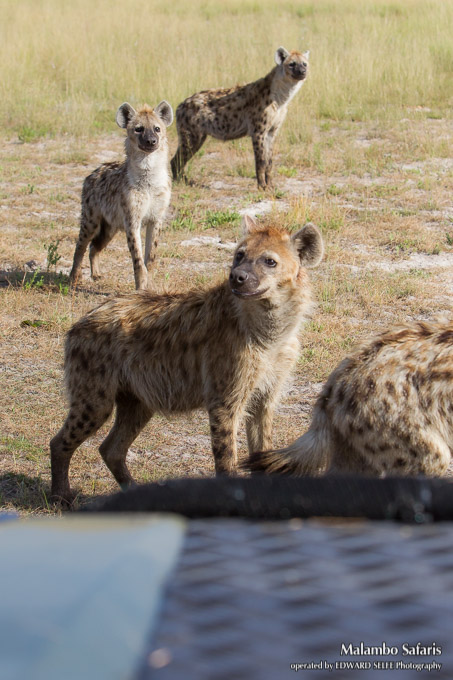
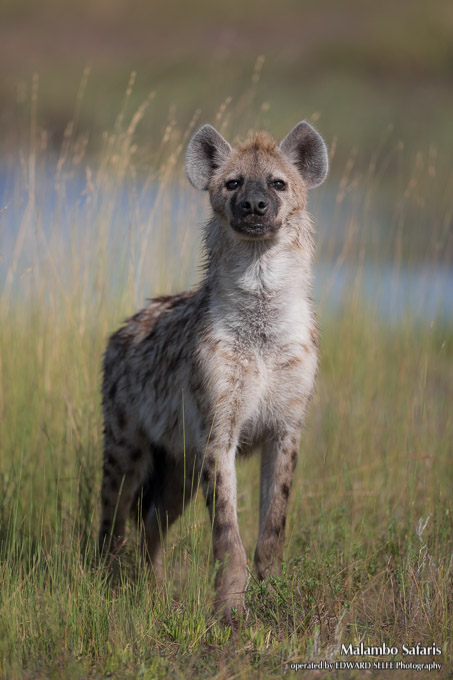
Clans of this size are normal in Liuwa. Sometimes, clans of 50 have been reported but they are rarely seen together. More commonly, the clan will split at sunset and go hunting, hoping to snag some wildebeest during the early hours of the morning when they wildebeest are tired from being chased around and drop their guard. From the research which is carried out in Liuwa, this is a tactic that is very successful, as clans are known to kill between 1 and 3 wildebeest each night; with 6 known clans in the central area, this represents a substantial off-take from the herbivore population which stands at around 40,000.
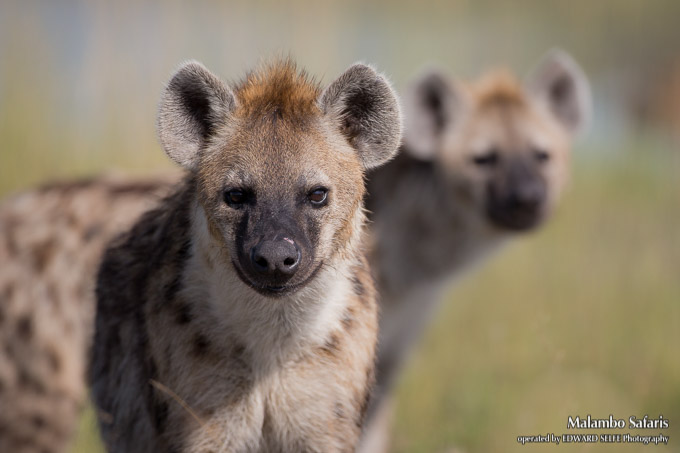
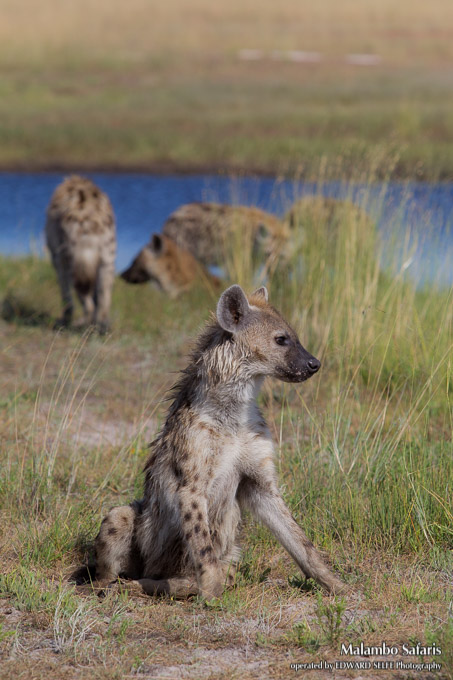
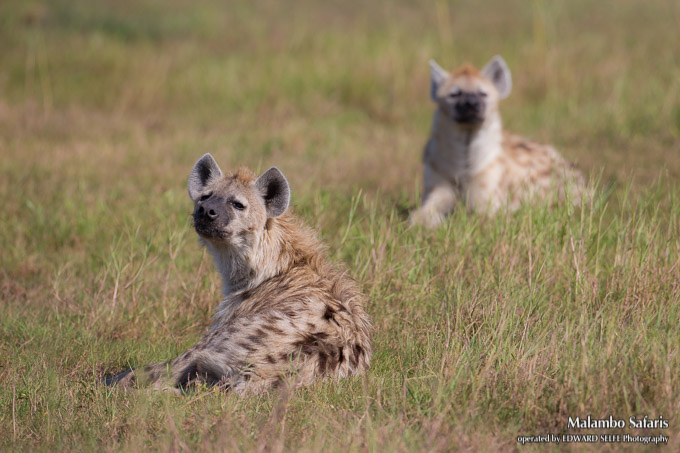
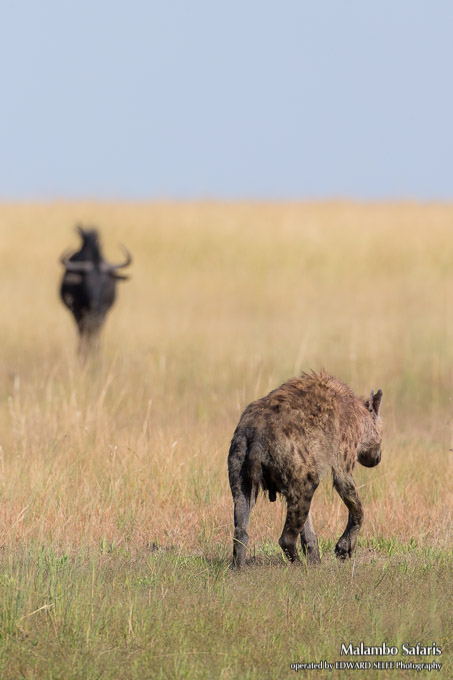
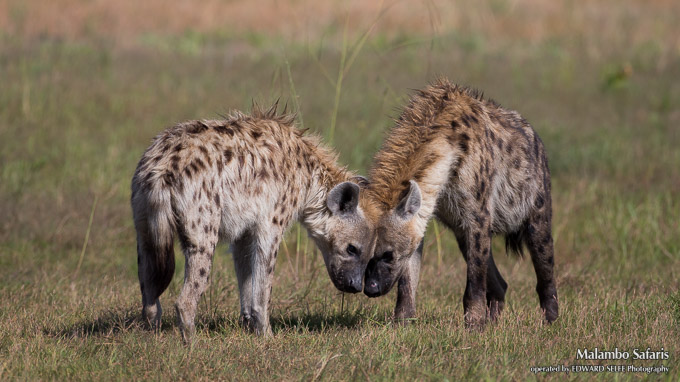
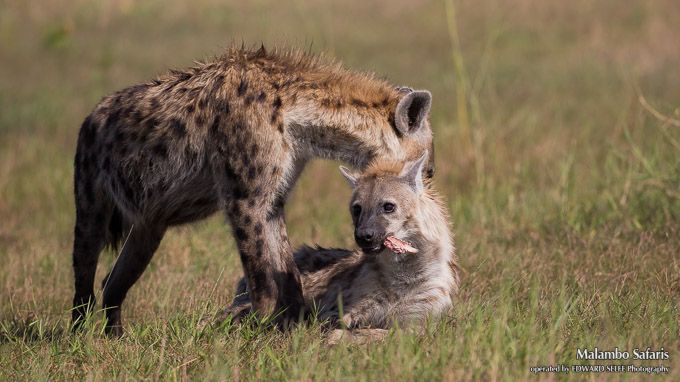
In the afternoon, we decided to go to a hyaena den in the South of the park, hoping to spot some of the youngsters which had been spotted there in previous days. On the way, we stopped to enjoy the mixed herds of wildebeest and zebra that are always found on the short-grass patches between the longer, less nutritious areas.
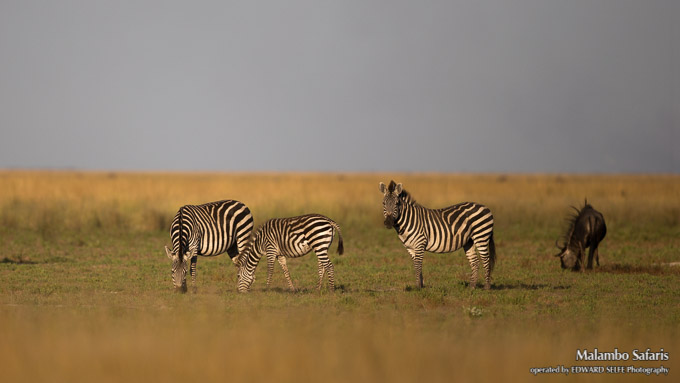
Spotting hyaenas on the way there, we approached and found a den site belonging to the Miyumi Clan, not the clan that we had been heading for. One large hyaena was wandering in the grass, and another (much older individual) was resting on top of the mound, surveying the area and keeping the den site safe.
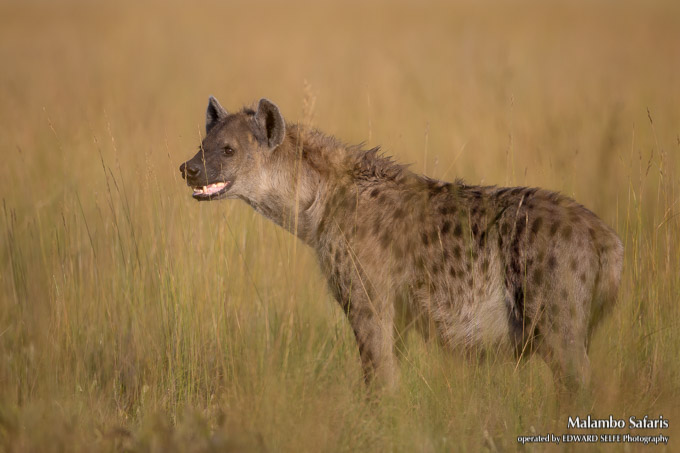
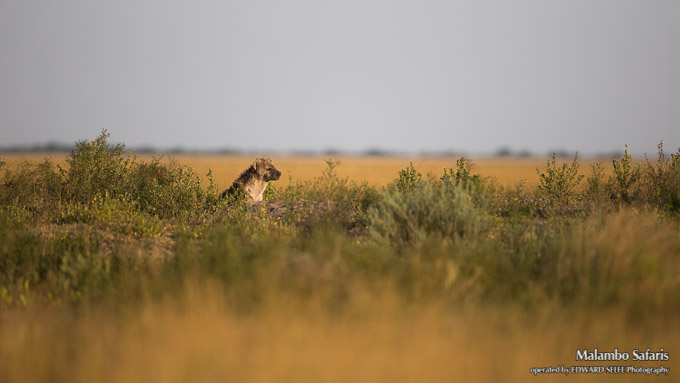
We visited the Southern den just before sunset, but there was no sign of the youngsters so we enjoyed a crimson sundowners and waited for dark to fall.
Immediately darkness arrived, we could hear the sounds of the cubs begging for food from the adults. We knew they must have emerged from the den. What followed was perhaps the most memorable 30 minutes of my trip to Liuwa: we approached slowly and found 5 cubs milling around on top of the mound, being cared for by two large females.

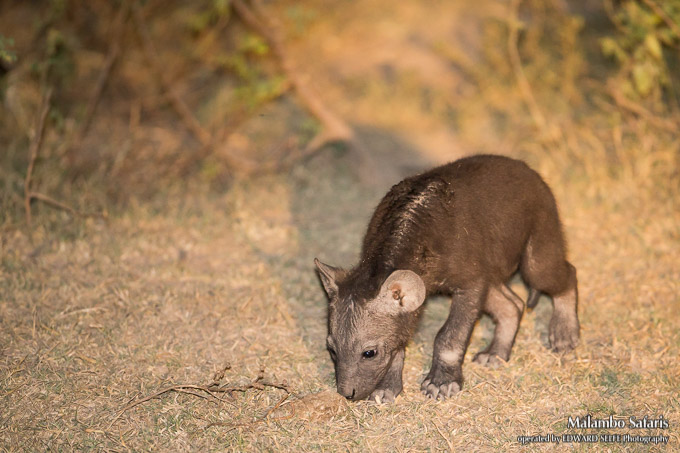
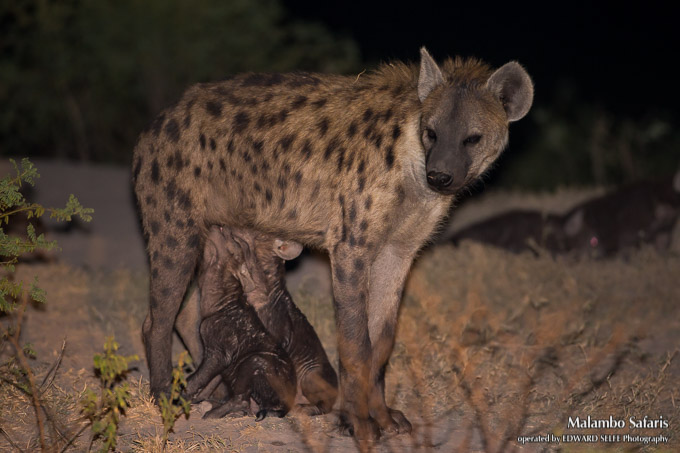
We watched with huge smiles on our faces as the youngsters sucked from the females, tumbled down the den holes, re-emerged and continued competing for food. At one stage, one of the females picked up the youngest cub in her mouth and deposited it in the den. The cub wasn’t impressed with this and emerged seconds later and rejoined the fun.

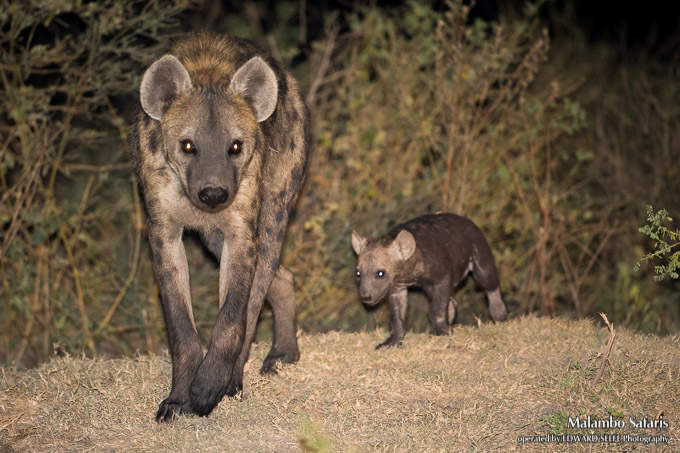
Rivalry between young hyaenas for the finite resources of their mothers’ milk is fierce and siblicide is commonly recorded in this species. We could see the heat of the rivalry even in the short time we were there. We decided to move away once the females began to herd the youngsters into the den, deciding that perhaps we were beginning to distress them.
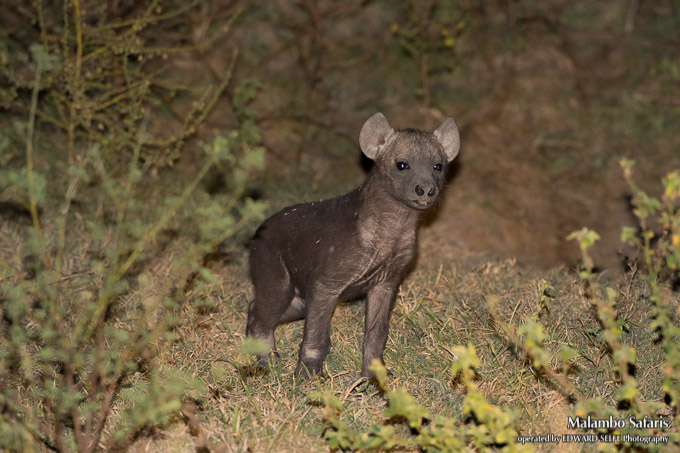
On the way back to camp, we spotted an African Wild Cat!! Certainly a first for me and a species very high on the list of many experienced safari-goers. Not commonly seen in Liuwa but certainly present in decent numbers, this is a real treat for any travellers considering safaris in Liuwa.
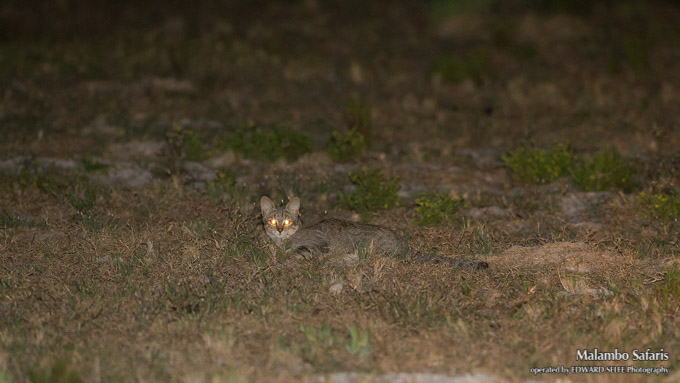
The following morning, we set out with no particular plan. We would just see what we found. The plains were full of life, including this lone bull….
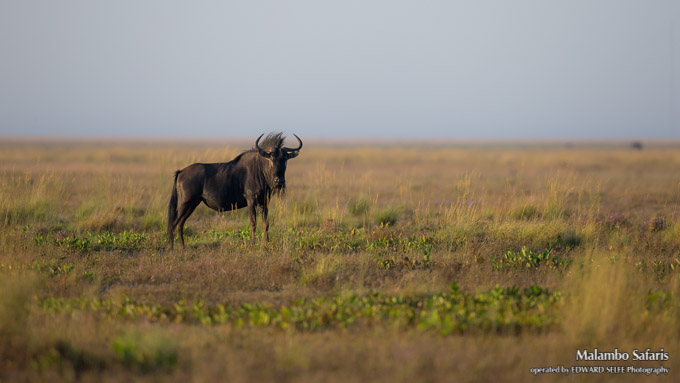
….and this Wattled Crane which flew past us with mate in close pursuit.
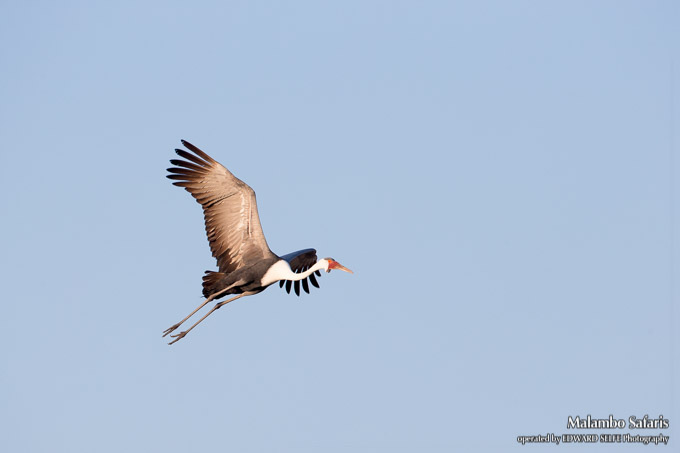
Separating part of the herd using a longer lens, I made a portrait of this wildebeest ‘family’.

Heading to one of the waterholes with the wildebeest, we found a lone hyaena resting in the soft mud. With little shade around, these predators make use of the water to keep cool in the heat of the day. As you can see, the wildebeest know that they are not a threat in daytime and certainly not when they are alone, so they pass each other with barely a glance.
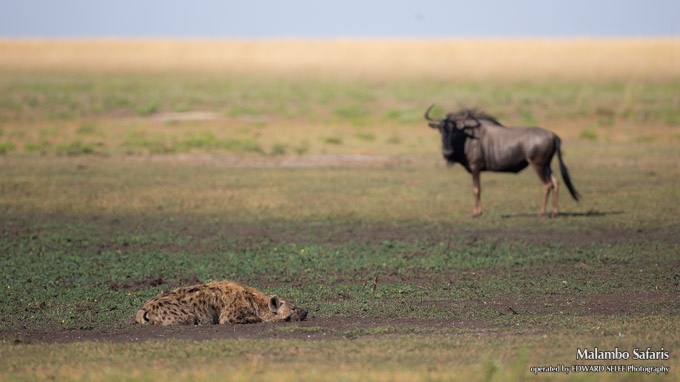
The wildebeest delight in the cooling waters.
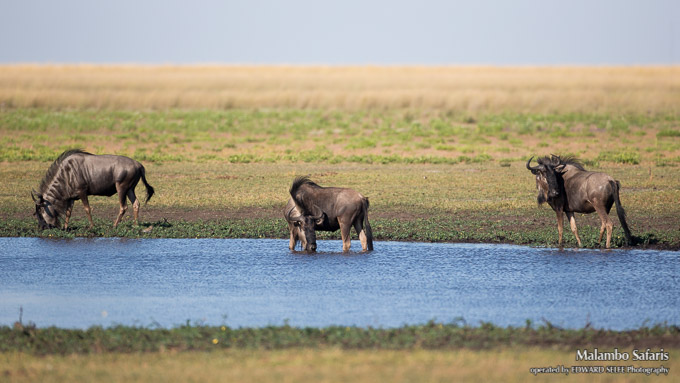
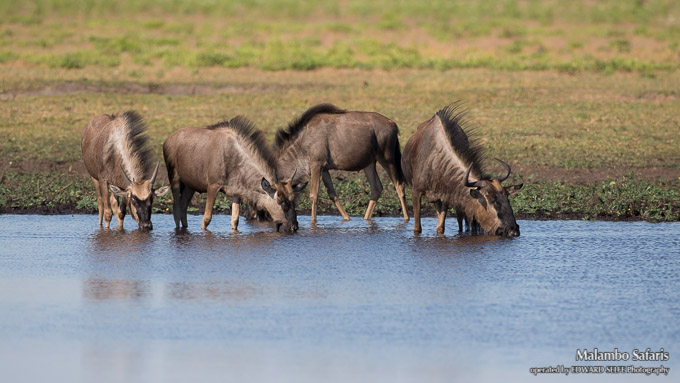
Later we found a few young hyaenas who had just got up from their lying positions. We wondered why until we saw the adults coming in the distance. The greeting between them was nice to watch – lots of leg lifting and genital sniffing, and eventually some deferential behaviour from the cubs – lying on their backs with legs in the air!
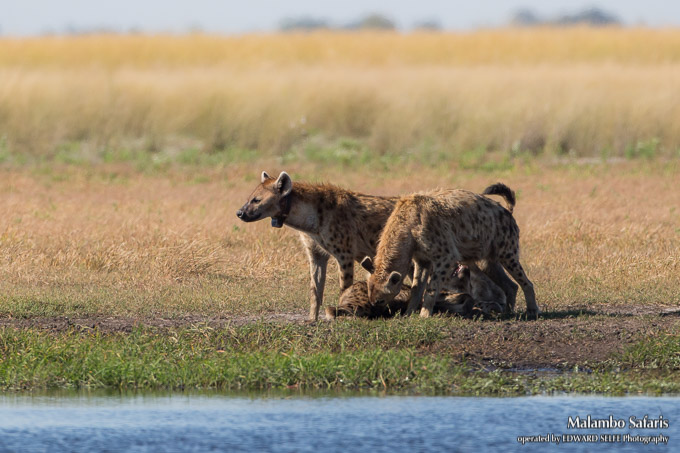
Heading back to camp, we got one of my favourite photos of the trip; a mixed herd of zebras and wildebeest arranged nicely across the plains.

Having had such success with the hyaenas the previous two days, we decided to start out the following morning with the plan to photograph the large herds of wildebeest that roam the plains. In May, the only area of the park that has any short grass is around NCs’s Matamanene Camp, so the whole population is centred here. But taking photos that portray the vastness of the plains, and the huge numbers of herbivores is hard; wide-angle lenses, which would seem the obvious choice, lead to everything being very small in the frame and the wildebeest are lost. Mid-length lenses are better and I have some shots a 200mm, but it’s hard to separate the wildebeest in the foreground from those in the background. So I opted to use my longest lens and see if I could create a nice composition, showing a proud wildebeest bull in the foreground with others in the distance making up the frame.
On the way to the short-grass plains, we found a Side-striped Jackal hunting in the long grass. The light was beautiful so we spent some time maneouvering to get in front of it and allow it to hunt towards us. It paused occasionally as if to pounce on a rodent, but never went through with it!
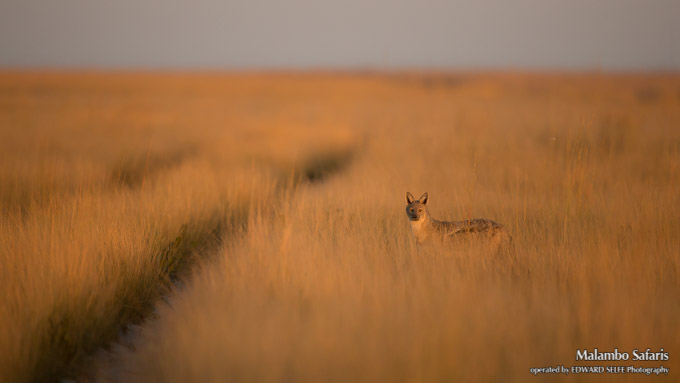
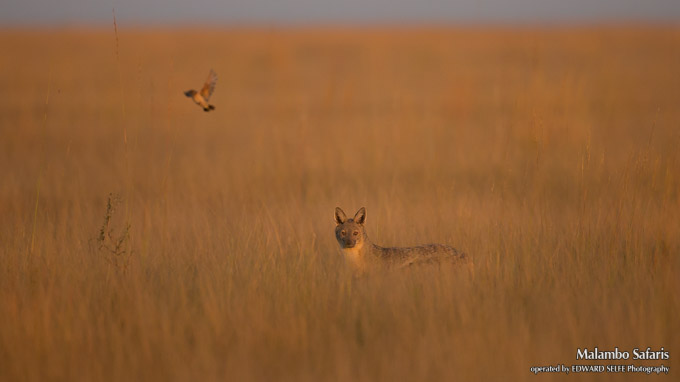
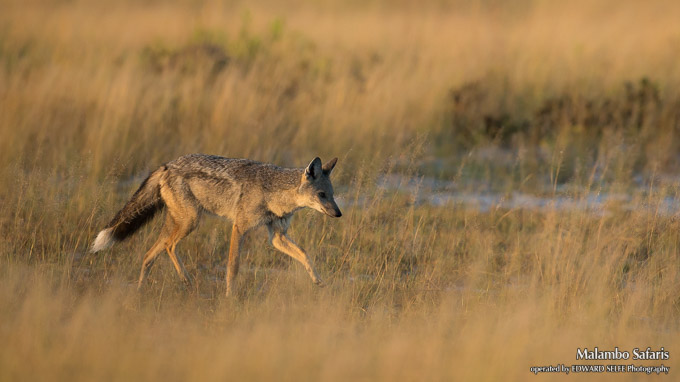
Arriving on the plains, I began my mission with the wildebeest. Initially, it didn’t go so well as all the bulls were shy and ran from us whenever we stopped the vehicle. I quickly realised that the wind was blowing from behind us and carrying our scent onto the animals. We took a sharp turn and headed into wind and the problem was solved! Over the coming morning, we had some nice sightings including this bull who swished flies with his tail, and a pair of Crowned Cranes foraging in the forbs.
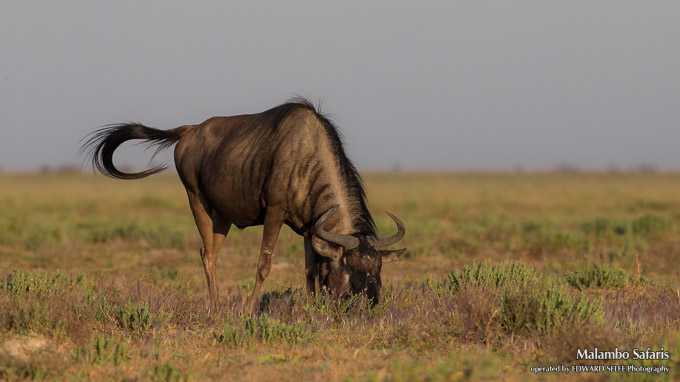
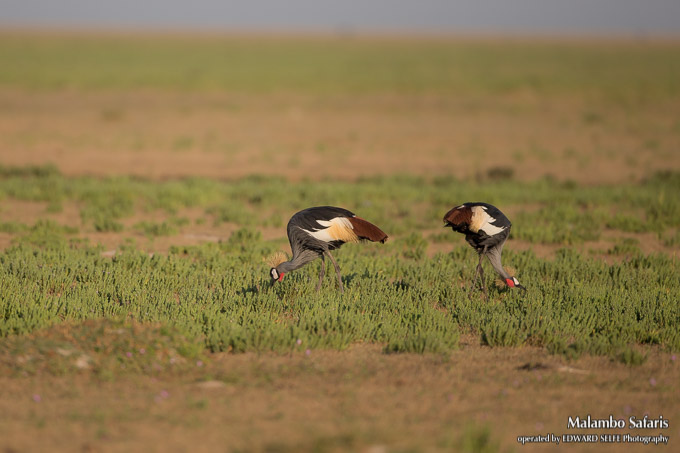

In the end, I got the shot that I was looking for. A study of a bull wildebeest, with many others in the background to tell the story of the herd.
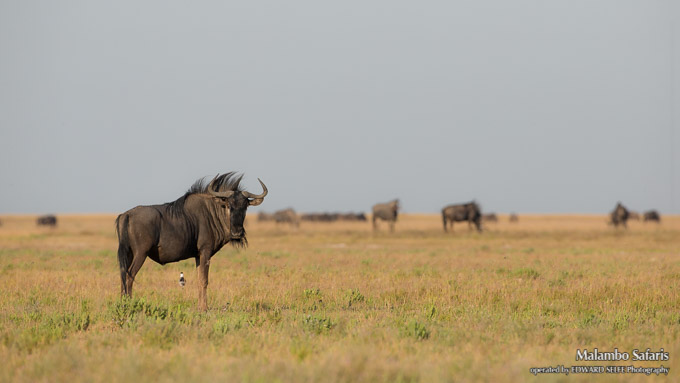
A well-placed waterhole gave us something to break up the greenery……
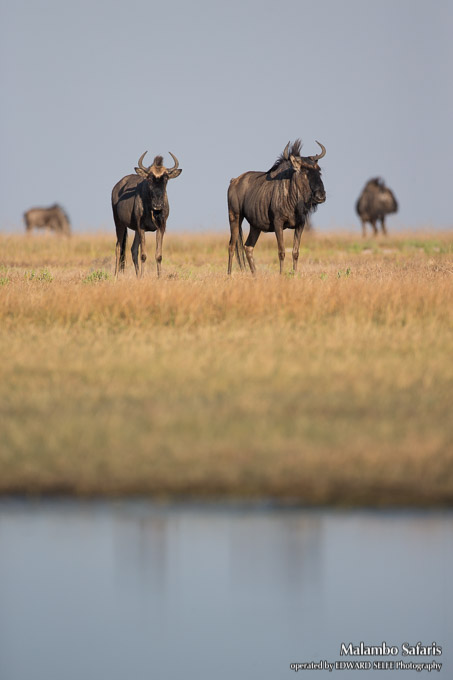
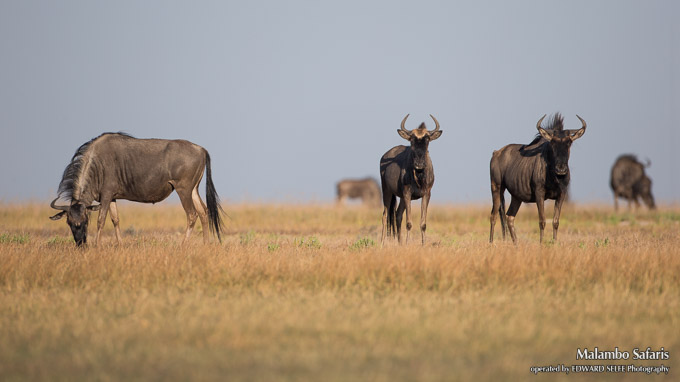
Despite their abundance, I am continually drawn to these strange-looking animals. They are so common that they might be easy to overlook, but they are not small like an impala, the common antelope equivalent in bush country. They are large and noisy and have nowhere to hide. And in fact, I see a majestic beauty in them, particularly when a bull stands proudly to defend his territory. I was keen to capture this stance, even if only in silhouette, so I spent time sizing up the bulls to see which were keen for a challenge! What I needed was a bull who was close enough to be interested in me, but far enough away not to be scared of me. Finding one, I climbed down from the vehicle and leopard-crawled towards him. The wind was good, and he raised his head to see what I was. Without the benefit of scent, he couldn’t resolve me and continued to snort and stamp and hold his head high. Just what I wanted – I managed to get some shots of the profile which is so evocative of that area.
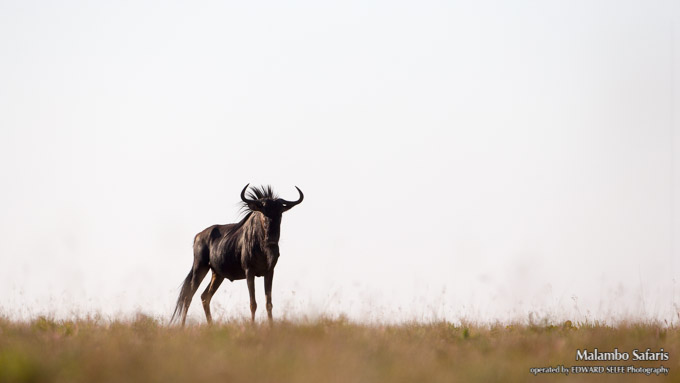

Continuing across the plain, we disturbed a huge flock of Red-winged Pratincoles – an aerial insect-feeder which live there in huge numbers. More active at first and last light, they scattered when we approached giving us a view of thousands of beating wings – we could even feel the wind from their wingbeats when they passed.
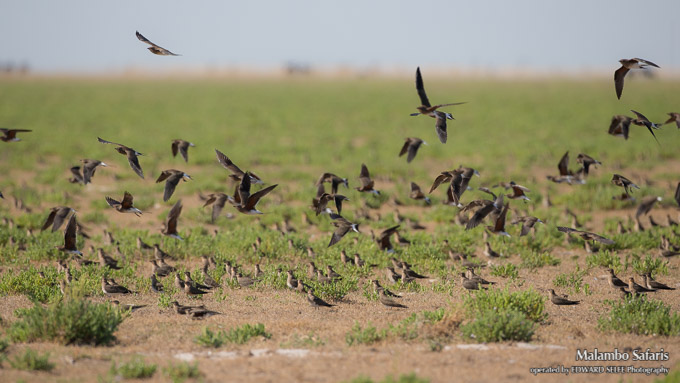
We were heading for a lagoon which we knew was topped with lots of beautiful water lilies. I was very pleased to find that two Wattled Cranes were feeding in the shallows. We approached carefully as these birds are hugely shy and managed to get close enough before they moved off.
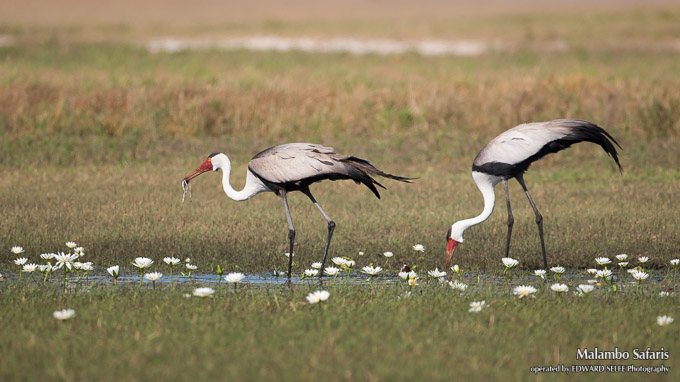
While we were sitting there, we spotted two hyaenas running across the plain. We followed them, and then got ahead to see where they were going. We never worked it out, but took some photos as one ran towards us.
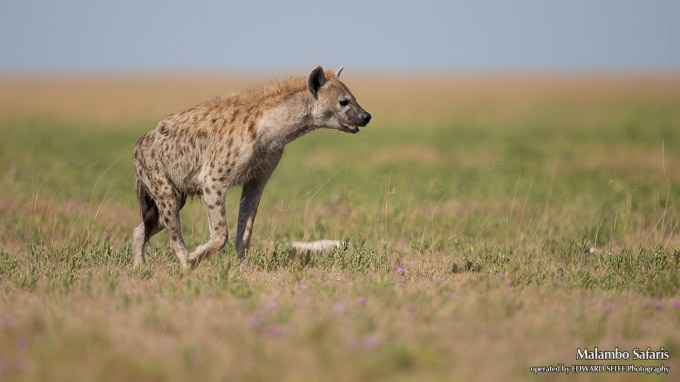
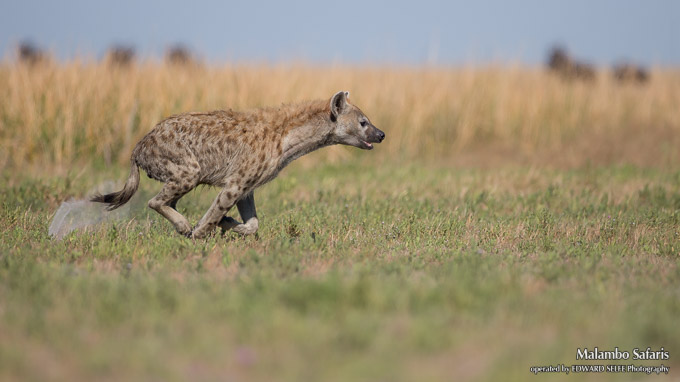
We did, however, spot some Vultures landing on the ground and went to see what they were eating. We found the carcass of a jackal (probably immature) which was badly mauled. It’s hard to know if the hyaenas were involved or whether the Vultures were the first on the scene, but it was nice to see a Lappet-faced, a White-headed and a White-backed Vulture on the same carcass!
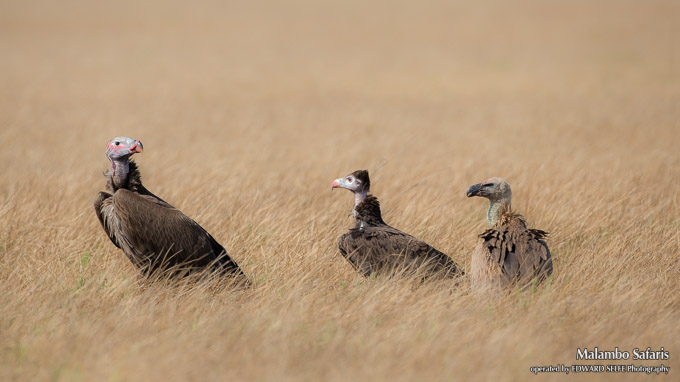
On our last evening, we decided to go and look for the lions again, since we hadn’t seen them since our first evening. It took some time, but we found them in the end with some help from the Zambian Carnivore Programme who are monitoring the big predators in the area.
All 5 were there, including the famous Lady Liuwa, although it was only the young male Nakawa, and the larger female cub who stood up to offer a photo opportunity. It was great to see them in such nice light.
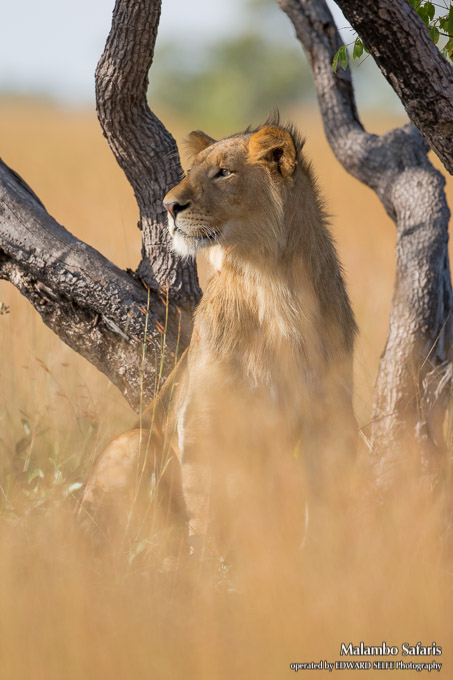
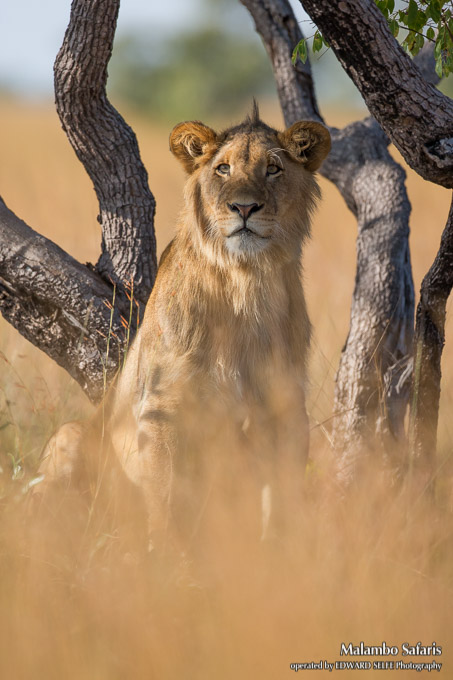

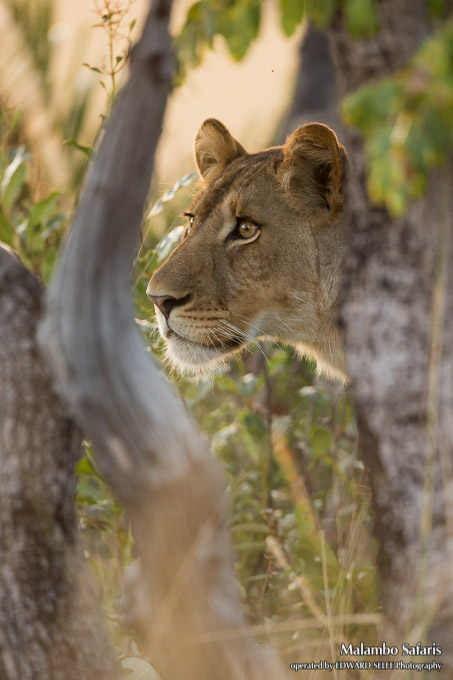
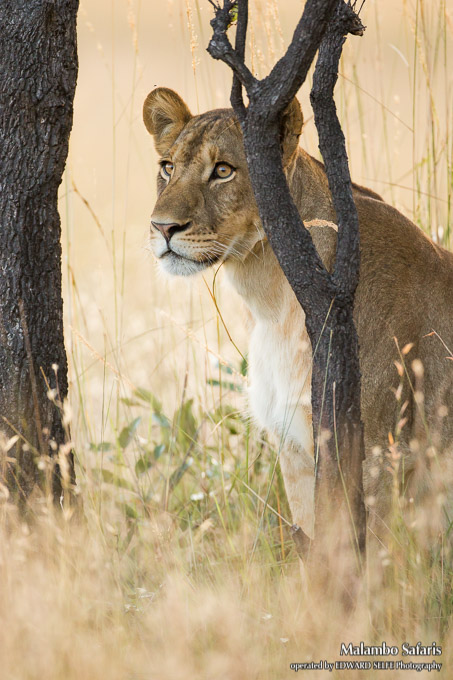
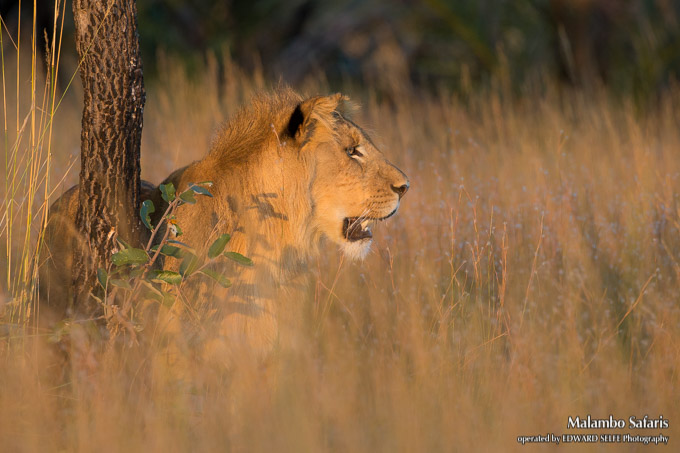
They started to show interest in some zebras in the distance so we moved away as they slunk into the grass. Meanwhile I took some photos of the backlit grasses, and a nearby Oribi male, before the sun went down.
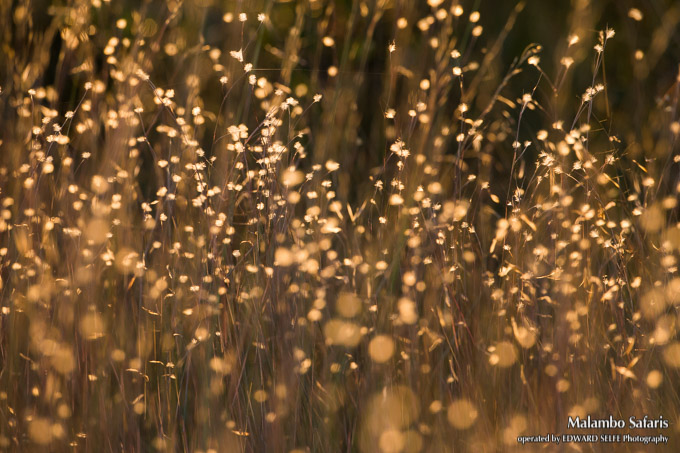
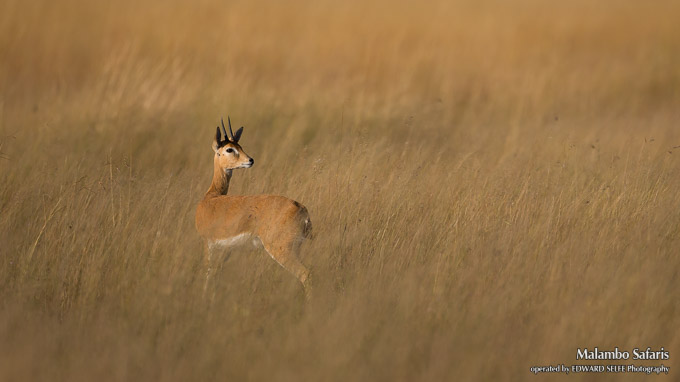
The Liuwa Plains are a unique and beautiful ecosystem that very few people will ever visit. As recently as 2001, the park had only 121 visitors in a whole year! It is a complete contrast to life in the bush and will appeal to any safari-goer who loves wildlife and the planet’s wild places. For photographers, it is paradise – if you would like to read more about what a trip to Liuwa Plain with NCS and me as your private guide, please have a look at this link here.


